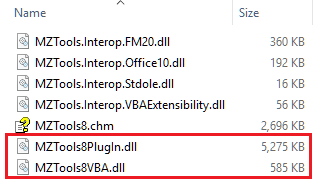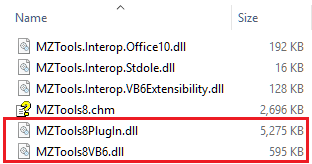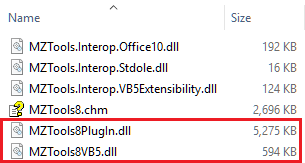It has been a long time since my last post here, and for a good reason. Since I released MZ-Tools 8.0 for Visual Studio 2015 last July 1 (converted from add-in to package), I have been very busy the last months to achieve a new huge milestone:
Announcing unified MZ-Tools 8.0 for Visual Studio, VBA (64-bit/32-bit), VB6 and VB5
From the extensibility point of view, MZ-Tools 8.0 is a unique piece in the world, AFAIK: it provides the same feature set for four different IDEs (Visual Studio, VBA editor, Visual Basic 6.0 and Visual Basic 5.0) with different extensibility APIs reusing the same code at binary level:
MZ-Tools 8.0 for Visual Studio (as package):
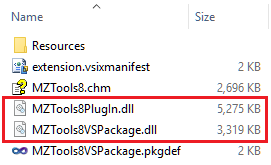
MZ-Tools 8.0 for Visual Studio (as add-in):
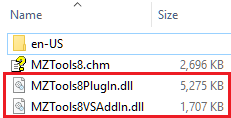
As you can see in the images, in all cases there is the same big MZTools8PlugIn.dll file, which contains the feature set, and smaller host adapter dlls that “plug” the features into the IDEs. If you are interested, I outlined the strategy to achieve this in this other post.
